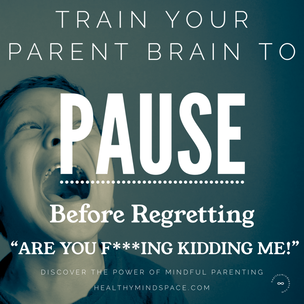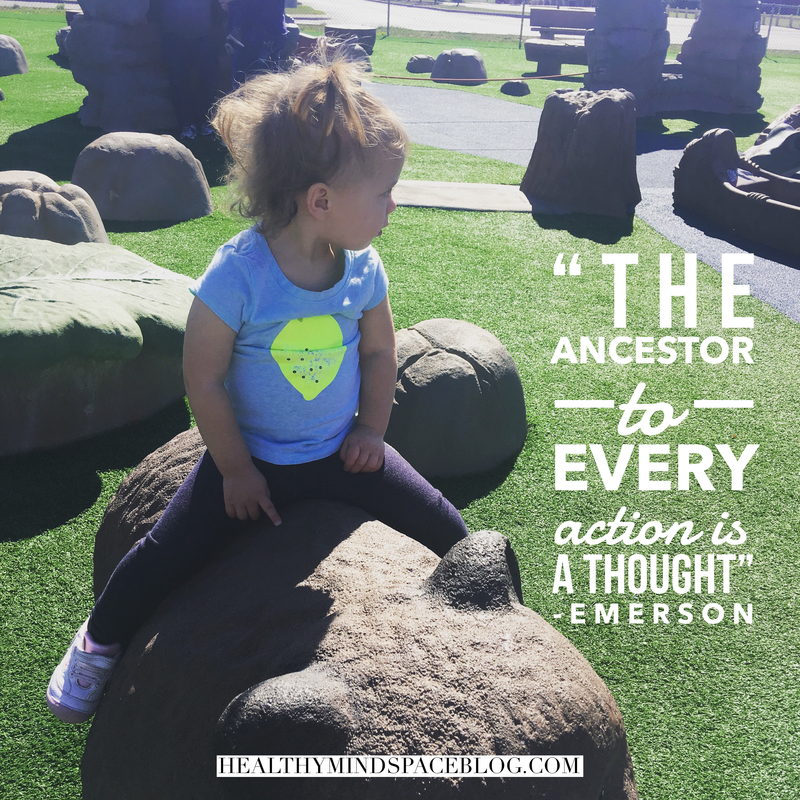|
Dear Parents/Caretakers,
I am going to keep this simple. I am WITH you on the challenges of working from home and being with your beloved kiddos all day, every day. There are so many moments to cherish during this unprecedented time together, but there are many moments where you might just lose it. To help maintain the sanity that you do have left, it's time to add some time for YOU into the day. 3-5 minutes minimum. Give yourself time to just BE. Just sit and focus on your breathing, listen to the birds, watch the rain. Just do one thing and do it well. That will support the brains response system to develop more control. That way the oh-so-powerful PAUSE between a stimulus and response will shine more often! How the Mindful PAUSE works… Stimulus - (NO PAUSE) - Response (No/Limited Mindfulness Support) Stimulus: "Ellie, please turn off your Kindle," says mom. Response: Ellie doesn't hear mom’s request. Stimulus: Ellie doesn't hear mom's request. (Of which research supports, isn't her fault since her dopamine is flowing at a high level.) Response: "Ellie! Are you f***ing kidding me? I said get off that Kindle right now!!" And then the two are in a heightened level of stress as a battle ensues. Stimulus - PAUSE - Response (Mindfulness Support) Stimulus: "Ellie, please turn off your Kindle," says mom. Response: Ellie doesn't hear mom’s request. Stimulus: Ellie doesn't hear mom's request. (Of which research supports, isn't her fault since her dopamine is flowing at a high level.) PAUSSSSSSSSE (options are contemplated with clarity) Response: Mom approaches Ellie and makes physical contact to gain her attention. Ellie makes eye contact with Mom to listen. Mom offers a one minute warning for shut down. Ellie shuts the technology down. This PAUSE is a key benefit that comes from regular, intentional mindfulness practice. Research has shown that mindfulness practice can reduce the amount of gray matter in the amygdala, which plays a major role in our levels of stress. It has also been proven to reduce the levels of cortisol, also associated with decreased stress levels. So when a mindfulness practitioner is stimulated by something challenging, the brain is more likely to naturally pause to consider response options. This pause can ultimately lead to a more controlled, positive outcome for all. To learn more about the power of mindfulness and the importance of starting with YOU, check out the online course, Mindful Parenting: Keeping it Simple or Launching a Mindful Classroom: It Starts with YOU. Use the code: FAMILY to receive 50% now through May 15th in response to the Global Pandemic. We are in this together.
0 Comments
 We all make them. Excuses. Especially when it comes to something for ourselves. This is written to my peeps. Yup, I said “peeps.” My tribe. My colleagues in the education industry. My - I’m just swimming enough to keep my head above water - fellow parents of young children. Things are not easy right now. The daily grind is chaotic. Work is busy. Families are full of energy-because if your weather is anything like the weather here in Western NY, it’s been chilly and rainy for what feels like weeks, which means we are all a bit stir crazy! BUT this is when we need to tune into ourselves the most. This is when we often have emotional reactions to things that are said to us. In the classroom, if students are short with us or are giving us attitudes, we may find ourselves mirroring a snarky response. When the kids are running in circles whining, “Mama, I want juice!” or “Daddy, I need my crayons!” and we are wondering where our sweet, well-mannered children have disappeared to, the simple tone of our response escalates out of pure annoyance. Or with our partners when they don’t get to unloading the dishes or changing over the laundry like you had asked help with, it’s flipping annoying. But, is the emotional reaction really worth the argument or hurt feelings that would likely follow? This is where the power of restraint - the power of mindful restraint - shines. Pause. Observe. Restrain. Breathe. Respond. How do you cultivate the superpower of recognizing when it’s time to pause, observe, restrain, breathe and respond? Just sit. Everyday. Start with 3 minutes, then treat yourself to 4...5...10 minutes a day. There is no wrong way to give yourself the power of a sit. Focus on your breath, or the sounds around you. Repeat a mantra to calm your mind. Over time, research has proven that your brain will begin physically changing for the better to help you see the big picture more clearly and with more empathy. (For more information on how this is possible, check out this article from Psychology Today) And before you creatively respond with something along the lines of, “I just don’t have the time right now. The kids have basketball everynight, it's conference and report card time, the holidays are coming...” Pause and think about that response. Is that an emotional reaction to the idea-an anxious reaction? I might have to say so... So, let's regain power. Take emotion out of the excuse and picture yourself sitting in a quiet space. Can you see it? If so, you can do it. Commit to yourself. Commit to your “peeps.” It’s a win for all involved!
Wholehearted (adjective) whole·heart·ed: completely and sincerely devoted, determined, or enthusiastic Heartfulness (noun) heart·ful·ness: a beneficial state of positive qualities-like kindness, gratitude, and generosity-leading to greater well-being.  Heartfulness is a key support of mindfulness practice. In my opinion, this is where we can begin effective mindfulness practice with our youngest ones. Asking a two year old to practice “intentional sitting” can be tricky all in itself. They will likely just take off in the opposite direction on you -at least that is what my twins do! But that’s where we call in our creative side. Tap into our personal interests and the interests of our child(ren). I’m not suggesting that you have to go all out with this creativity, but rather just use things that you already have around the house. Keep it simple. ;-) Creating the Space: Imagine creating space in our week to explore all of the people that we love. We can do this in a special seated location, such as on a pillow, blanket or cushion that is made especially for our little one. To keep the toddler hands occupied, add in an object that is special to the child; a toy, stuffed animal, crystal rock, plant or picture. Join your child in the same fashion as you share a few intimate minutes together in this unique, special space made just for you. We will likely need to model the first few times, but once the habit is rolling, we may just find that it becomes the best part of the week as we savor the sweetness of a child’s heart. Listing the many people that we love, sending happy thoughts to someone that we miss, giving all of the reasons why we love someone on our list... these are the moments that can make our hearts FULL and get us through the more challenging ones. Ever wonder about the scientific side of things? Emotional regulation is a key benefit of mindfulness. By creating this space in your week for heartfulness practice, you are strengthening the developing amygdala part of the brain that is responsible for emotional responses, as well as the prefrontal cortex that is responsible for making decisions in response to emotions. SOOOO, we are essentially training our child’s brain to pause after getting stepped on by a sibling and swinging back in response. Stimulus-Pause-Response. That’s a win in this house!! Heartfully, Christy Lynn |
the blog space
I'm obsessed. This is fabulous. LOVE that you are doing this. The new way of being a student forces us to think outside the box and approach how we teach more dynamically. ~Derek, Father of 2 and Elementary School Principal
Author
Just a girl with a dream to collectively build a healthy mind space for children, while creating a healthier mind space for ourselves. Archives
June 2022
Categories
All
Copyright Healthy Mind Space 2019
|
Healthy Mind Space
- Home
- About
- Coaching for K-4 Students
- Resources
-
Register for Workshops
- Mindfulness Based Interventions PreK-5 Educator Workshop
- Mindfulness Based Interventions & MTSS on August 23, 2022
- It Starts With YOU: Mindfulness Coaching for Educators (Team)
- Yoga + Mindfulness for the Preschool Classroom >
- On-Site Staff Workshop: Launching a Mindful Classroom
- Kids Yoga: One Class Registration >
- Women’s Athletic Tank
- Women’s Casual Top
- Contact
|
Healthy Mind Space offers mindfulness coaching and workshops to professional educators, preschools & childcare centers, and families throughout the Rochester, NY area. By practicing mindfulness in our everyday lives, and through intentional interactions in our classrooms, I believe we can help kids develop a greater capacity for kindness, compassion, positivity, self-confidence and the opportunity to achieve their full potential. |




 RSS Feed
RSS Feed

